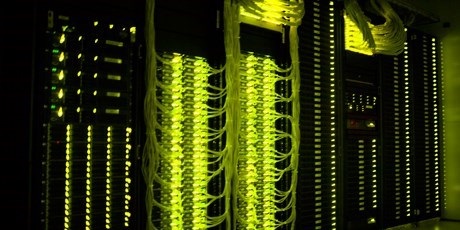
Nov. 3, 2017
By: Michael Feldman
Huawei has chalked up a win in Europe, delivering an upgrade to the Niflheim HPC cluster at the Technical University of Denmark (DTU), one of premier technical institutions in Europe.
 The new Huawei cluster is comprised of 180 nodes of its XH620 v3 platform. Each node is outfitted with two Intel “Broadwell” Xeon E5-2650 v4 CPUs (12 cores apiece), running at 2.20 GHz, and delivering 845 gigaflops of peak performance. The nodes use 2400 MHz DDR4 dual-rank memory; 12 nodes are equipped with 512 GB, while the remaining 168 nodes get 256 GB. Each node also sports a 240 GB SSD. The cluster is glued together with Intel’s Omni-Path 100Gbps fabric, using a two-layer, fat-tree topology.
The new Huawei cluster is comprised of 180 nodes of its XH620 v3 platform. Each node is outfitted with two Intel “Broadwell” Xeon E5-2650 v4 CPUs (12 cores apiece), running at 2.20 GHz, and delivering 845 gigaflops of peak performance. The nodes use 2400 MHz DDR4 dual-rank memory; 12 nodes are equipped with 512 GB, while the remaining 168 nodes get 256 GB. Each node also sports a 240 GB SSD. The cluster is glued together with Intel’s Omni-Path 100Gbps fabric, using a two-layer, fat-tree topology.
The Huawei hardware was layered onto the existing Niflheim cluster, which is comprised of older Dell and HP gear containing three generations of Intel Xeon CPUs (Ivy Bridge, Sandy Bridge and Nehalem), along with an InfiniBand network. With the new Huawei hardware, Niflheim now contains 861 compute nodes and delivers 225 teraflops, 152 of which are provided by the additional XH620 v3 nodes.
The rationale for the upgrade was the lack of processor horsepower, memory capacity, and network capability needed by researchers at the university’s Computational Atomic-scale Materials Design (CAMD) Center. The idea was to reduce turnaround time on the material design simulations. According to the press release:
“The new cluster helps more researchers carry out research and analysis on new materials and new energy, but also provides a great leap in feedback speeds of test results. It has enabled new levels of scientific research progress and strength, helping DTU generate new innovation capabilities in the field of material analysis.”
Although not a huge system by university standards, the win in Denmark reflects Huawei’s ambition to further expand its HPC footprint in Europe. Of the six top Huawei systems on the continent, four are in Germany and two are in Poland, including the 1.37-petaflop (peak) supercomputer at the Poznań Supercomputing and Networking Center. The move into Denmark establishes another beachhead for the China-based OEM.
The upgraded Niflheim cluster came online in December 2016.
